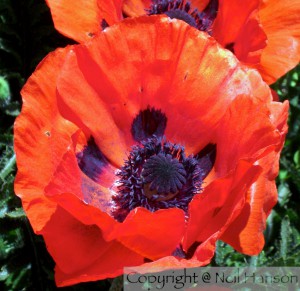 Bicycle Touring in the West
Bicycle Touring in the West
Day 16 – Durango to Pagosa Springs
“Hope is definitely not the same thing as optimism. It is not the conviction that something will turn out well, but the certainty that something makes sense, regardless of how it turns out.Â
 ~ Vaclav Havel
Durango is a big bicycle town. There are some world-class cyclists who hail from these parts, and I’ve heard many times of the great road cycling in the area. In addition, there’s a tremendous road cycling club in the area, and Ft Lewis College in Durango has what they bill as the “#1 cycling program in the nationâ€, with 17 national championships. There’s a really fun ride I try and do most years down here over Memorial Day – they call it the Iron Horse Classic and it’s a ride/race from Durango to Silverton where you’re racing the old Steam Engine up into the mountains. Lot’s of climbing, about 50 miles, and they close the road for a couple hours for the race.
Perhaps understandably, I have again set some expectations for the day. I’m imagining that cars in the area are accustomed to cyclists, and that the roads will accommodate safe riding.
Once again, my expectations set me up for disappointment.
Riding east on US160 out of Durango is one of the most treacherous sections of highway I’ve encountered on my ride thus far. There is no shoulder, and the traffic early in the morning is extremely heavy. The first few miles is fine, as the highway is divided, but as soon at the highway narrows down to two lanes, it’s a nightmare. Generally speaking, Colorado motorists are better than the average US driver when it comes to safety for cyclists, but with the morning volume and narrow road, there’s just no way this can be a safe ride.
Since I left California, I’ve been generally impressed with the highways I’ve ridden on. There’s almost always been a shoulder appropriate to the traffic. I’ve arrived at my home state in one of the cycling capitals of the nation, and am enduring some of the most dangerous riding I’ve yet encountered.
 The good news is that after 10 or 15 miles, the highway grows a bit of a shoulder, and the traffic thins out. By the time we hit Bayfield there’s a shoulder, and by Piedra, it’s actually a pleasant ride. We stop at a little general store there in Piedra and enjoy some rest and calories.
The good news is that after 10 or 15 miles, the highway grows a bit of a shoulder, and the traffic thins out. By the time we hit Bayfield there’s a shoulder, and by Piedra, it’s actually a pleasant ride. We stop at a little general store there in Piedra and enjoy some rest and calories.
The place we stop in Piedra is like a little truck farm. They’ve just planted their vegetables in what appears to be a 3 or 4 acre garden, and they have irrigation running nonstop to try and get things started. It’s a mighty short growing season in the mountains here, and I can’t imagine that a person can raise enough on a couple acres to make a go of it. As I’m sitting in the shade out on the deck, I wonder if the general store can possibly turn enough profit to support a garden operation that might break-even. But I can’t imagine this either, since it’s sorta out in the middle of nowhere, and in the 30 minutes we spend here, no other business walks in the door.

There must have been some capital that helped these folks buy this property and this store. There must be some cash flow that lets them stock the store and plant the garden. But can they possibly turn a profit year to year? Perhaps, but my common-sense business logic can’t imagine how, let alone how they can pull any sort of living income from the operation.

What is it that drives folks to take on these sorts of operations? With the economy we’ve been suffering through for the last several years, I know lots of folks who’ve been laid off, and have tried their hand at making a go of some sort of self-employment. In most cases, the results are far less glamourous and supportable than folks had envisioned. The work is often harder than expected, the hours longer than desired, and the income generally falls far short of what was hoped.
In many cases, folks spend their life savings to make a go of some dreamed-of enterprise, only to lose the whole kit ‘n kaboodle. Of course, there are some success stories as well, but my common sense and experience leads me to believe these success stories are far outweighed by the disasters.

And yet, year after year, folks dive into these commercial dreams with zeal and optimism. We seem to be a people with far more optimism than common sense sometimes. And yet, chatting with the gal who runs the store, I have zero doubt that she is as happy as she’s ever been in her life. She exudes goodwill and joy. And while I don’t get to chat with the old fella who is presumably her husband, he has a way and a walk about him that makes me believe he’s probably a happy fella too. He sits in the shade for a spell, then hops on his little ATV and motors out to one of the irrigation heads, and moves it to a new place or a new angle. Then he heads back to the shade to watch the water falling on his garden.
And who knows – maybe they do make an economic go of it. Who am I to say. I sure doubt if I’d loan much money for an enterprise like this, but I sure admire the happiness and joy that it appears to bring to these folks.
 The weather today is absolutely perfect for cycling. It’s warm but not hot – somewhere in the 90’s – with the low for the day in the morning at a little under 50. The scenery is tremendous. Along the highway, there are a myriad of blooming wildflowers, and I end up stopping often to take pictures. Mileage and climbing today are almost exactly the same as yesterday at just shy of 60 miles and something over 3000 feet.
The weather today is absolutely perfect for cycling. It’s warm but not hot – somewhere in the 90’s – with the low for the day in the morning at a little under 50. The scenery is tremendous. Along the highway, there are a myriad of blooming wildflowers, and I end up stopping often to take pictures. Mileage and climbing today are almost exactly the same as yesterday at just shy of 60 miles and something over 3000 feet.
We’ve reached Colorado elevation now, and we’re staying here. Oddly, it feels like home to me. It’s not really the landscape around me, because where I live on the Eastern Slope of the rockies, it’s really high desert rather than the mountain pine that we see a lot of today. It’s the elevation that’s making me feel a bit “at homeâ€.
Usually, when we think of “homeâ€, we’re thinking in 2 dimensions – a place on a flat map. But I’m realizing for the first time in my life today that as I’m riding at 5000 and 6000 feet and above, it feels like “home†elevation to me. My home is right at 6000 feet, and most of my riding is at that elevation and above.
 Back in Twentynine Palms on my first rest day, I read a short little novel about a Ute family that lived in this area around 1900. When I picked the book up, I didn’t realize it was set here, but now that I’m here, I’m remembering clearly the descriptions of Pagosa, Piedra, and other nearby places. In my mind, I’m kind of reliving the novel as I ride through the landscape.
Back in Twentynine Palms on my first rest day, I read a short little novel about a Ute family that lived in this area around 1900. When I picked the book up, I didn’t realize it was set here, but now that I’m here, I’m remembering clearly the descriptions of Pagosa, Piedra, and other nearby places. In my mind, I’m kind of reliving the novel as I ride through the landscape.
 I’ve often been struck by the frequency of “coincidence†like this. Of all the books I might pick up at that little used bookstore on the edge of Twentynine Palms, what are the odds that the one I pick up is set in a place I’ll be riding right through soon?
I’ve often been struck by the frequency of “coincidence†like this. Of all the books I might pick up at that little used bookstore on the edge of Twentynine Palms, what are the odds that the one I pick up is set in a place I’ll be riding right through soon?
 Maybe I make too much of these sorts of coincidences, but it really does seem that it’s fairly common that life leaves little breadcrumbs along the path we’re moving through in life. I think many folks are just too busy with making their way down the path to notice the breadcrumbs, or pick ‘em up when they see ‘em, or think much about ‘em if they do pick ‘em up.
Maybe I make too much of these sorts of coincidences, but it really does seem that it’s fairly common that life leaves little breadcrumbs along the path we’re moving through in life. I think many folks are just too busy with making their way down the path to notice the breadcrumbs, or pick ‘em up when they see ‘em, or think much about ‘em if they do pick ‘em up.
The older I get, the better I am at noticing more along the path, and picking stuff up. A lot of what I pick up and turn over in my hands and mind doesn’t seem to mean much. But the more time I spend noticing the bits and pieces along the path, the more little synchronicities I find myself encountering, and the more “coincidence†I notice.
The next step – the step I hope to find soon – is a better ability to understand the synchronicities and what I can learn from the little bits, pieces, and connections.
We roll in to Pagosa Springs at just after noon, and check in to our motel. After a shower, we walk over to a steak house for lunch, where we’ll eat again at suppertime. I’m finding that I really like these short days, as they offer a lot of relaxation time in the afternoon. Few things in life are as sweet as a 30 minute nap around 1:30 in the afternoon…


Great story, Neil. Glad you enjoyed your visit to Pagosa Springs.
Thanks for the comment D.
Great story, Neil. Glad you enjoyed your visit to Pagosa Springs.
Thanks for the comment D.